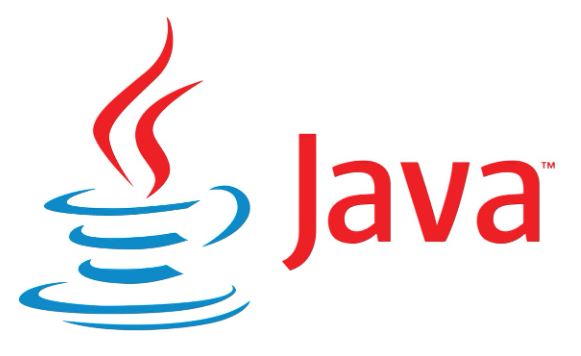Java 网络编程性能优化:高吞吐量的实现方法
Java 网络编程性能优化:高吞吐量的实现方法
在当今的互联网时代,网络应用的性能优化是开发人员面临的重要挑战之一。Java 作为一门广泛使用的编程语言,提供了强大的网络编程支持,但如何通过优化实现高吞吐量,是每个 Java 网络开发者都需要深入研究的课题。本文将从多个方面探讨 Java 网络编程性能优化的方法,并通过代码示例进行详细说明。
一、理解吞吐量与性能瓶颈
在讨论性能优化之前,我们需要明确吞吐量的概念。吞吐量是指单位时间内系统能够处理的请求数量,它直接影响到系统的响应能力和扩展性。在 Java 网络编程中,吞吐量受到多种因素的限制,包括网络带宽、服务器处理能力、线程管理、I/O 操作等。因此,优化高吞吐量的关键在于识别并消除这些性能瓶颈。
(一)常见的性能瓶颈
- 线程瓶颈:传统的阻塞 I/O 模型中,每个连接都需要一个独立的线程来处理,这会导致线程数量过多,增加上下文切换的开销,从而限制吞吐量。
- I/O 等待瓶颈:在阻塞 I/O 模式下,线程在读写操作时会阻塞等待,导致线程资源的浪费。
- 网络带宽瓶颈:如果网络带宽不足,即使服务器处理能力再强,也无法实现高吞吐量。
- 内存瓶颈:频繁的内存分配和回收会导致垃圾回收(GC)频繁触发,影响系统性能。
二、使用非阻塞 I/O 模型
非阻塞 I/O 模型是实现高吞吐量的关键技术之一。与传统的阻塞 I/O 模型相比,非阻塞 I/O 不会在读写操作时阻塞线程,从而可以显著提高系统的吞吐量。Java 提供了基于 NIO(New Input/Output)的非阻塞 I/O 支持,通过使用选择器(Selector)来管理多个通道(Channel),可以实现高效的多路复用。
(一)NIO 的基本概念
NIO 是 Java 1.4 引入的一种新的 I/O 模型,它基于通道(Channel)和缓冲区(Buffer)进行操作。通道是双向的,可以同时进行读写操作,而缓冲区则是数据存储的容器。选择器(Selector)是 NIO 的核心组件,它可以同时管理多个通道,监听它们的事件(如连接请求、读写事件等),从而实现高效的多路复用。
(二)代码示例:基于 NIO 的服务器实现
以下是一个简单的基于 NIO 的服务器代码示例,它展示了如何使用选择器来管理多个客户端连接,并实现非阻塞 I/O 操作。
import java.io.IOException;
import java.net.InetSocketAddress;
import java.nio.ByteBuffer;
import java.nio.channels.*;
import java.util.Iterator;
import java.util.Set;public class NIOServer {public static void main(String[] args) throws IOException {// 创建选择器Selector selector = Selector.open();// 打开服务器通道ServerSocketChannel serverSocketChannel = ServerSocketChannel.open();serverSocketChannel.bind(new InetSocketAddress(8080));serverSocketChannel.configureBlocking(false); // 设置为非阻塞模式// 将服务器通道注册到选择器上,并监听连接事件serverSocketChannel.register(selector, SelectionKey.OP_ACCEPT);System.out.println("服务器启动,监听端口 8080...");while (true) {// 等待事件发生selector.select();// 获取事件集合Set<SelectionKey> selectedKeys = selector.selectedKeys();Iterator<SelectionKey> iterator = selectedKeys.iterator();while (iterator.hasNext()) {SelectionKey key = iterator.next();iterator.remove();if (key.isAcceptable()) {// 处理新的连接请求ServerSocketChannel serverChannel = (ServerSocketChannel) key.channel();SocketChannel clientChannel = serverChannel.accept();clientChannel.configureBlocking(false); // 设置为非阻塞模式clientChannel.register(selector, SelectionKey.OP_READ); // 注册读事件System.out.println("新客户端连接:" + clientChannel.getRemoteAddress());} else if (key.isReadable()) {// 处理读事件SocketChannel clientChannel = (SocketChannel) key.channel();ByteBuffer buffer = ByteBuffer.allocate(1024);int bytesRead = clientChannel.read(buffer);if (bytesRead == -1) {// 客户端关闭连接clientChannel.close();System.out.println("客户端关闭连接:" + clientChannel.getRemoteAddress());} else {buffer.flip();byte[] data = new byte[buffer.remaining()];buffer.get(data);String message = new String(data);System.out.println("收到客户端消息:" + message);// 回复客户端clientChannel.write(ByteBuffer.wrap("消息已收到".getBytes()));}}}}}
}
(三)优化点
- 减少线程数量:通过使用选择器管理多个通道,可以避免为每个连接创建独立的线程,从而减少线程上下文切换的开销。
- 提高 I/O 效率:非阻塞 I/O 模式下,线程不会在 I/O 操作时阻塞等待,可以充分利用 CPU 资源,提高系统的吞吐量。
三、使用线程池管理线程
虽然非阻塞 I/O 模型可以减少线程数量,但在某些情况下,我们仍然需要线程来处理具体的业务逻辑。此时,使用线程池来管理线程可以提高系统的性能和资源利用率。线程池可以预先创建一定数量的线程,并在需要时分配给任务,避免了线程频繁创建和销毁的开销。
(一)线程池的使用
Java 提供了 ExecutorService 接口和 ThreadPoolExecutor 类来实现线程池的功能。通过合理配置线程池的参数(如核心线程数、最大线程数、任务队列大小等),可以优化系统的性能。
(二)代码示例:结合线程池的服务器实现
以下是一个结合线程池的服务器代码示例,它展示了如何在 NIO 的基础上使用线程池来处理业务逻辑。
import java.io.IOException;
import java.net.InetSocketAddress;
import java.nio.ByteBuffer;
import java.nio.channels.*;
import java.util.Iterator;
import java.util.Set;
import java.util.concurrent.ExecutorService;
import java.util.concurrent.Executors;public class NIOServerWithThreadPool {private static final int PORT = 8080;private static final int THREAD_POOL_SIZE = 10;public static void main(String[] args) throws IOException {// 创建线程池ExecutorService threadPool = Executors.newFixedThreadPool(THREAD_POOL_SIZE);// 创建选择器Selector selector = Selector.open();// 打开服务器通道ServerSocketChannel serverSocketChannel = ServerSocketChannel.open();serverSocketChannel.bind(new InetSocketAddress(PORT));serverSocketChannel.configureBlocking(false); // 设置为非阻塞模式// 将服务器通道注册到选择器上,并监听连接事件serverSocketChannel.register(selector, SelectionKey.OP_ACCEPT);System.out.println("服务器启动,监听端口 " + PORT + "...");while (true) {// 等待事件发生selector.select();// 获取事件集合Set<SelectionKey> selectedKeys = selector.selectedKeys();Iterator<SelectionKey> iterator = selectedKeys.iterator();while (iterator.hasNext()) {SelectionKey key = iterator.next();iterator.remove();if (key.isAcceptable()) {// 处理新的连接请求ServerSocketChannel serverChannel = (ServerSocketChannel) key.channel();SocketChannel clientChannel = serverChannel.accept();clientChannel.configureBlocking(false); // 设置为非阻塞模式clientChannel.register(selector, SelectionKey.OP_READ); // 注册读事件System.out.println("新客户端连接:" + clientChannel.getRemoteAddress());} else if (key.isReadable()) {// 处理读事件SocketChannel clientChannel = (SocketChannel) key.channel();threadPool.execute(new ClientHandler(clientChannel));}}}}// 客户端处理线程static class ClientHandler implements Runnable {private final SocketChannel clientChannel;public ClientHandler(SocketChannel clientChannel) {this.clientChannel = clientChannel;}@Overridepublic void run() {try {ByteBuffer buffer = ByteBuffer.allocate(1024);int bytesRead = clientChannel.read(buffer);if (bytesRead == -1) {// 客户端关闭连接clientChannel.close();System.out.println("客户端关闭连接:" + clientChannel.getRemoteAddress());} else {buffer.flip();byte[] data = new byte[buffer.remaining()];buffer.get(data);String message = new String(data);System.out.println("收到客户端消息
```java: "消息已收到".getBytes());clientChannel.write(ByteBuffer.wrap("消息已收到".getBytes()));}} catch (IOException e) {e.printStackTrace();try {if (clientChannel != null && clientChannel.isOpen()) {clientChannel.close();}} catch (IOException ex) {ex.printStackTrace();}}}}
}
(三)优化点
- 线程复用:通过线程池管理线程,可以复用线程,减少线程创建和销毁的开销。
- 平衡负载:线程池可以根据系统资源合理分配任务,避免过多线程导致的资源竞争和上下文切换开销。
四、优化缓冲区的使用
在 Java NIO 中,缓冲区(Buffer)是数据传输的基本单位。合理优化缓冲区的使用可以显著提高数据传输的效率,减少内存分配和数据拷贝的开销。
(一)缓冲区复用
缓冲区复用是一种常见的优化手段。在实际应用中,可以预先分配一组缓冲区,供多个连接或多个操作共享使用。这样可以避免频繁的内存分配和回收,从而减少垃圾回收的开销。
(二)代码示例:缓冲区复用
以下是一个简单的缓冲区复用的代码示例:
import java.io.IOException;
import java.net.InetSocketAddress;
import java.nio.ByteBuffer;
import java.nio.channels.*;
import java.util.Iterator;
import java.util.Set;
import java.util.concurrent.ExecutorService;
import java.util.concurrent.Executors;public class NIOServerWithBufferReuse {private static final int PORT = 8080;private static final int THREAD_POOL_SIZE = 10;private static final int BUFFER_SIZE = 1024;private static final ByteBuffer[] buffers = new ByteBuffer[10];static {for (int i = 0; i < buffers.length; i++) {buffers[i] = ByteBuffer.allocate(BUFFER_SIZE);}}public static void main(String[] args) throws IOException {// 创建线程池ExecutorService threadPool = Executors.newFixedThreadPool(THREAD_POOL_SIZE);// 创建选择器Selector selector = Selector.open();// 打开服务器通道ServerSocketChannel serverSocketChannel = ServerSocketChannel.open();serverSocketChannel.bind(new InetSocketAddress(PORT));serverSocketChannel.configureBlocking(false); // 设置为非阻塞模式// 将服务器通道注册到选择器上,并监听连接事件serverSocketChannel.register(selector, SelectionKey.OP_ACCEPT);System.out.println("服务器启动,监听端口 " + PORT + "...");while (true) {// 等待事件发生selector.select();// 获取事件集合Set<SelectionKey> selectedKeys = selector.selectedKeys();Iterator<SelectionKey> iterator = selectedKeys.iterator();while (iterator.hasNext()) {SelectionKey key = iterator.next();iterator.remove();if (key.isAcceptable()) {// 处理新的连接请求ServerSocketChannel serverChannel = (ServerSocketChannel) key.channel();SocketChannel clientChannel = serverChannel.accept();clientChannel.configureBlocking(false); // 设置为非阻塞模式clientChannel.register(selector, SelectionKey.OP_READ); // 注册读事件System.out.println("新客户端连接:" + clientChannel.getRemoteAddress());} else if (key.isReadable()) {// 处理读事件SocketChannel clientChannel = (SocketChannel) key.channel();threadPool.execute(new ClientHandler(clientChannel));}}}}// 客户端处理线程static class ClientHandler implements Runnable {private final SocketChannel clientChannel;public ClientHandler(SocketChannel clientChannel) {this.clientChannel = clientChannel;}@Overridepublic void run() {try {// 获取一个复用的缓冲区ByteBuffer buffer = getReusableBuffer();int bytesRead = clientChannel.read(buffer);if (bytesRead == -1) {// 客户端关闭连接clientChannel.close();System.out.println("客户端关闭连接:" + clientChannel.getRemoteAddress());} else {buffer.flip();byte[] data = new byte[buffer.remaining()];buffer.get(data);String message = new String(data);System.out.println("收到客户端消息:" + message);// 回复客户端clientChannel.write(ByteBuffer.wrap("消息已收到".getBytes()));// 释放缓冲区releaseBuffer(buffer);}} catch (IOException e) {e.printStackTrace();try {if (clientChannel != null && clientChannel.isOpen()) {clientChannel.close();}} catch (IOException ex) {ex.printStackTrace();}}}// 获取复用的缓冲区private synchronized ByteBuffer getReusableBuffer() {for (ByteBuffer buffer : buffers) {if (!buffer.isReadOnly() && !buffer.hasRemaining()) {buffer.clear();return buffer;}}return ByteBuffer.allocate(BUFFER_SIZE);}// 释放缓冲区private synchronized void releaseBuffer(ByteBuffer buffer) {for (int i = 0; i < buffers.length; i++) {if (buffers[i] == buffer) {buffers[i].clear();return;}}}}
}
(三)优化点
- 减少内存分配:通过复用缓冲区,可以减少频繁的内存分配和回收,从而降低垃圾回收的开销。
- 提高数据传输效率:缓冲区复用可以避免数据在多个缓冲区之间的拷贝,提高数据传输的效率。
五、数据编码优化
在网络编程中,数据编码的选择对性能有着重要的影响。选择合适的数据编码格式可以减少网络传输的数据量,提高数据传输的效率。
(一)使用高效的编码格式
常见的高效编码格式包括 Protocol Buffers、MessagePack 等。这些编码格式相比传统的 XML、JSON 等文本格式,具有更小的数据量和更快的解析速度。
(二)代码示例:使用 Protocol Buffers
以下是一个使用 Protocol Buffers 进行数据编码的代码示例:
首先,定义一个 Protocol Buffers 的消息格式(message.proto):
syntax = "proto3";message Message {string id = 1;string content = 2;int64 timestamp = 3;
}
然后,使用 Protocol Buffers 的编译器生成 Java 代码。
import java.io.IOException;
import java.net.InetSocketAddress;
import java.nio.ByteBuffer;
import java.nio.channels.*;
import java.util.Iterator;
import java.util.Set;
import java.util.concurrent.ExecutorService;
import java.util.concurrent.Executors;import example.Message;public class NIOServerWithProtobuf {private static final int PORT = 8080;private static final int THREAD_POOL_SIZE = 10;public static void main(String[] args) throws IOException {// 创建线程池ExecutorService threadPool = Executors.newFixedThreadPool(THREAD_POOL_SIZE);// 创建选择器Selector selector = Selector.open();// 打开服务器通道ServerSocketChannel serverSocketChannel = ServerSocketChannel.open();serverSocketChannel.bind(new InetSocketAddress(PORT));serverSocketChannel.configureBlocking(false); // 设置为非阻塞模式// 将服务器通道注册到选择器上,并监听连接事件serverSocketChannel.register(selector, SelectionKey.OP_ACCEPT);System.out.println("服务器启动,监听端口 " + PORT + "...");while (true) {// 等待事件发生selector.select();// 获取事件集合Set<SelectionKey> selectedKeys = selector.selectedKeys();Iterator<SelectionKey> iterator = selectedKeys.iterator();while (iterator.hasNext()) {SelectionKey key = iterator.next();iterator.remove();if (key.isAcceptable()) {// 处理新的连接请求ServerSocketChannel serverChannel = (ServerSocketChannel) key.channel();SocketChannel clientChannel = serverChannel.accept();clientChannel.configureBlocking(false); // 设置为非阻塞模式clientChannel.register(selector, SelectionKey.OP_READ); // 注册读事件System.out.println("新客户端连接:" + clientChannel.getRemoteAddress());} else if (key.isReadable()) {// 处理读事件SocketChannel clientChannel = (SocketChannel) key.channel();threadPool.execute(new ClientHandler(clientChannel));}}}}// 客户端处理线程static class ClientHandler implements Runnable {private final SocketChannel clientChannel;public ClientHandler(SocketChannel clientChannel) {this.clientChannel = clientChannel;}@Overridepublic void run() {try {// 创建缓冲区ByteBuffer buffer = ByteBuffer.allocate(1024);int bytesRead = clientChannel.read(buffer);if (bytesRead == -1) {// 客户端关闭连接clientChannel.close();System.out.println("客户端关闭连接:" + clientChannel.getRemoteAddress());} else {buffer.flip();byte[] data = new byte[buffer.remaining()];buffer.get(data);// 解析 Protocol Buffers 数据Message message = Message.parseFrom(data);System.out.println("收到客户端消息:ID=" + message.getId() + ", Content=" + message.getContent() + ", Timestamp=" + message.getTimestamp());// 构造回复消息Message reply = Message.newBuilder().setId("Server").setContent("消息已收到").setTimestamp(System.currentTimeMillis()).build();// 发送回复消息clientChannel.write(ByteBuffer.wrap(reply.toByteArray()));}} catch (IOException | example.InvalidProtocolBufferException e) {e.printStackTrace();try {if (clientChannel != null && clientChannel.isOpen()) {clientChannel.close();}} catch (IOException ex) {ex.printStackTrace();}}}}
}
(三)优化点
- 减少数据量:Protocol Buffers 等高效的编码格式可以将数据量减少到传统文本格式的 1/10 到 1/3,从而减少网络传输的开销。
- 提高解析速度:高效的编码格式通常具有更快的解析速度,可以减少数据处理的时间。
六、总结与展望
通过上述方法的介绍和代码示例,我们可以看到 Java 网络编程性能优化的多个方面:
- 使用非阻塞 I/O 模型:通过 NIO 实现高效的多路复用,减少线程数量,提高系统吞吐量。
- 使用线程池管理线程:通过线程池复用线程,减少线程创建和销毁的开销,平衡系统负载。
- 优化缓冲区的使用:通过缓冲区复用,减少内存分配和数据拷贝的开销,提高数据传输效率。
- 数据编码优化:使用高效的编码格式,减少网络传输的数据量,提高数据处理速度。
在实际项目中,我们需要根据具体的需求和场景,综合运用这些优化方法,以实现高吞吐量的 Java 网络应用。同时,随着技术的不断发展和应用场景的多样化,我们还需要不断探索和尝试新的优化手段,以满足日益增长的性能需求。
未来的发展方向可能包括:
- 异步编程模型:随着 Java 对异步编程的支持不断加强(如 CompletableFuture、异步 Servlet 等),我们可以进一步提高系统的响应能力和吞吐量。
- 更高效的网络协议:如 HTTP/3、QUIC 等新协议的出现,为网络编程提供了更多的优化空间。
- 硬件加速:利用硬件(如 DPDK、智能网卡等)进行数据处理和传输,可以进一步提高网络性能。
总之,Java 网络编程性能优化是一个不断发展的领域,需要我们不断学习和实践,以应对不断增长的性能挑战。

